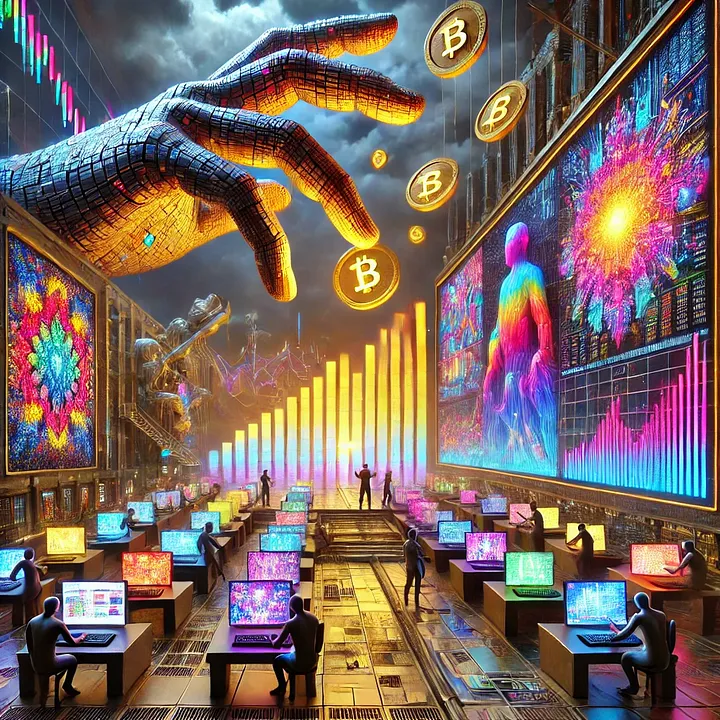Neoliberalism exerts a profound and paradoxical influence on the definition of what is considered “digital art,” shaping not only artistic production but also its structures of value, reception, and perception. Like an invisible wind, it blows through the codes, algorithms, and artistic intentions, creating financial storms disguised as cultural revolutions. By reducing the aesthetic and political potential of digital art to mere commodities, neoliberalism gilds a platform that, ironically, was conceived to be free, collaborative, and expansive.
At the heart of this process, we find commodification and institutional influence. Digital art, which should be a field for radical experimentation, becomes part of the financial order. Economic value, under the banner of profit, seeps in like an oil stain into once crystalline waters, limiting creative spontaneity in favor of “return on investment.” Institutions such as museums and galleries, even when dressed in progressive discourse, often reinforce market logic by legitimizing only what fits within the hegemonic narrative of commerce. Biennials themselves, sold as democratic spaces for display, are little more than fairs where art finds its place in the next auction.
Neoliberalism also turns the digital artist into a compulsive entrepreneur. In an ecosystem where life is measured in likes and shares, the artist becomes a manager of their own brand, a cybernetic prince who must yield more than produce, and promote more than create. Self-exploitation is mistaken for autonomy, and the pressure for relevance pushes artistic intentionality into the murky zone between authentic expression and the narcissism of a successful feed. Aesthetic production is molded by algorithms, which act as invisible curators, rewarding what fits into formulas of engagement and profit.
Here lies one of the greatest ironies: criticism of neoliberalism within digital art is often shaped by the very logic it seeks to denounce. Works that claim to subvert neoliberal capitalism often employ the same devices, languages, and market structures they critique, generating an inescapable dilemma: is it celebration, satire, or strategic complicity? Can an artist who exhibits on Instagram or sells NFTs question the logic of digital capitalism without simultaneously reinforcing it? Neoliberalism naturalizes itself as the very environment where art exists, rendering nearly invisible the structure that should be dismantled.
Moreover, technology acts as both mediator and catalyst of this influence. If the brush and canvas once defined the painter’s language, today it is algorithms and interfaces that shape digital creation. Software is the true studio, and code is the palette, yet this reality is often ignored by criticism, which focuses solely on visual or narrative elements. Technology, however, is not neutral. It carries within it the values of its creators and investors, shaping the aesthetic possibilities and the very limits of what is defined as art.
In short, neoliberalism does not influence digital art as an external factor but rather as a force that permeates its essence, determining not only its economic value but also its aesthetics, creative processes, and power relationships. Like a parasite disguised as a host, it infiltrates the fibers of the digital, absorbing its revolutionary potential and returning it as a polished product for consumption. Recognizing this complex entanglement is the first step toward imagining a future where digital art can break free from the invisible chains of the market and reclaim its transformative vocation.
Victor T. Murari
Art History, Education & Artificial Intelligence | PhD | Advancing Educational and Cultural Narratives through AI Integration

